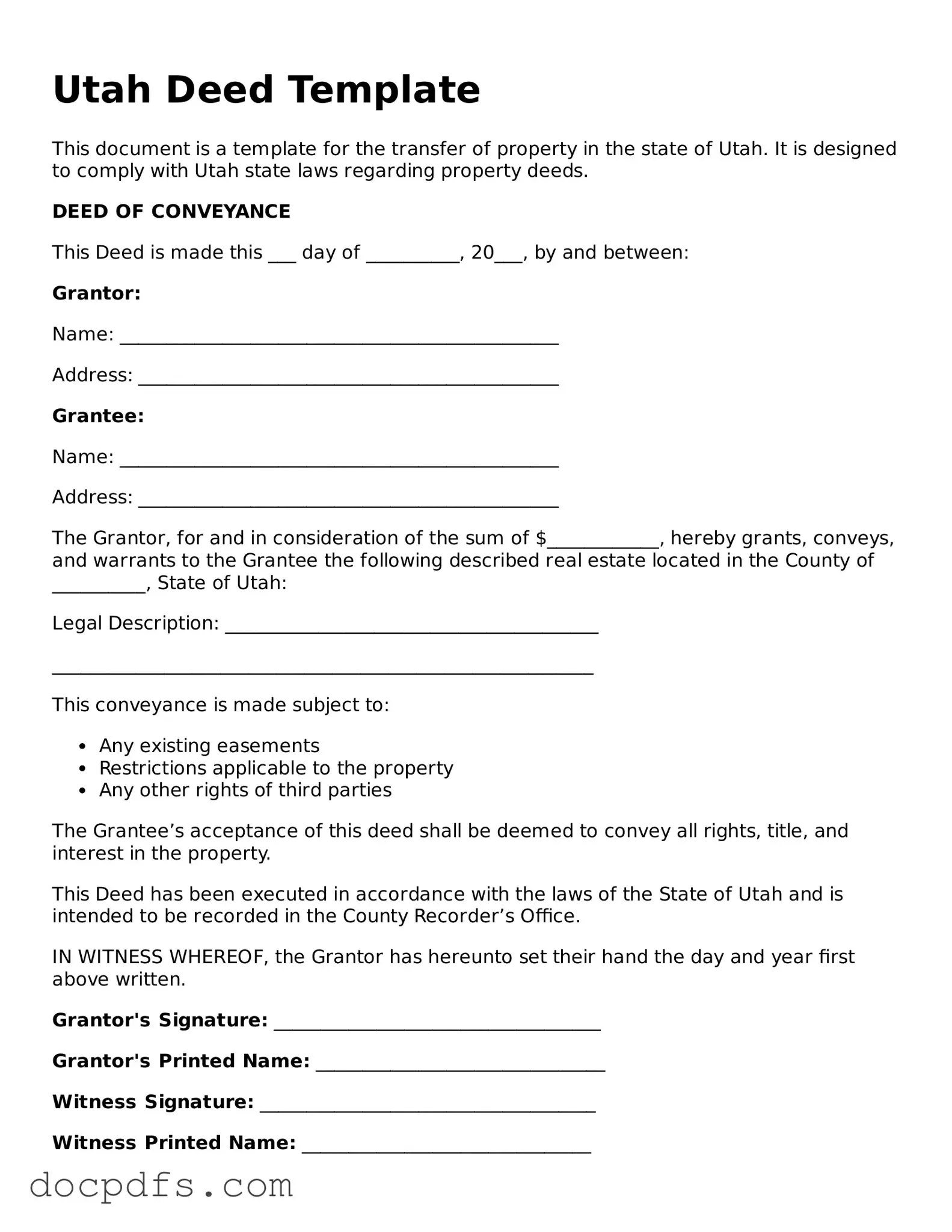Free Utah Deed Form
A Utah Deed form is a legal document used to transfer ownership of real property from one party to another within the state of Utah. This form serves as a vital record, ensuring that the change in ownership is officially recognized and documented. Understanding the nuances of this form can help property owners navigate the complexities of real estate transactions with confidence.
Open Deed Editor Now
